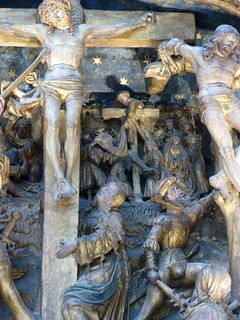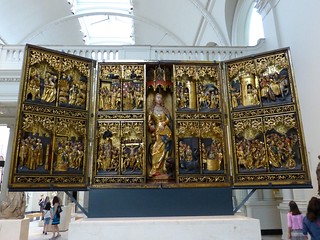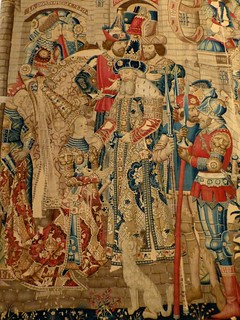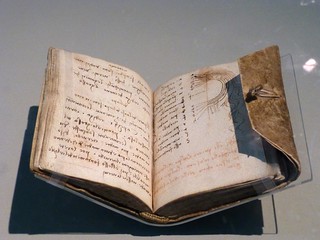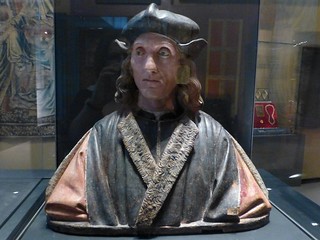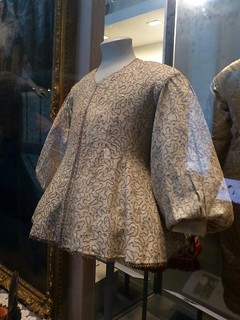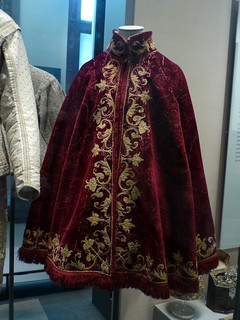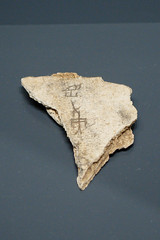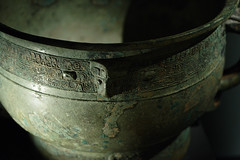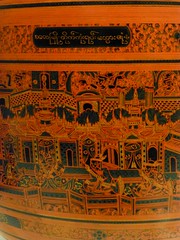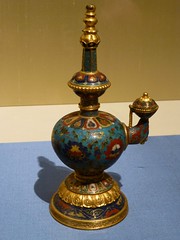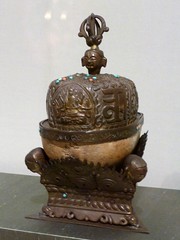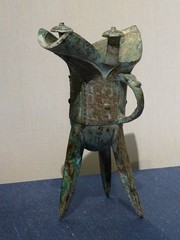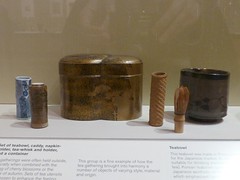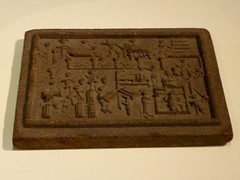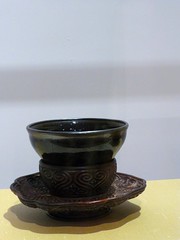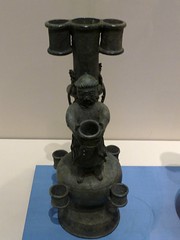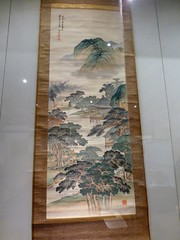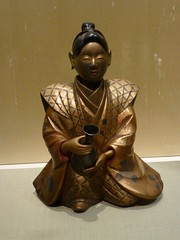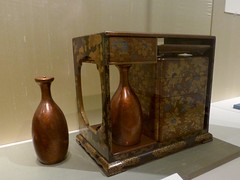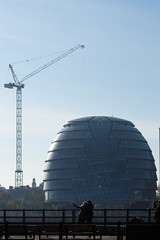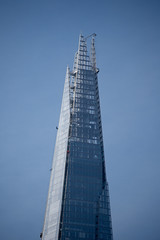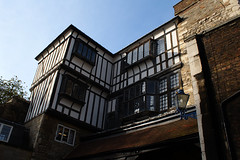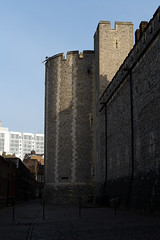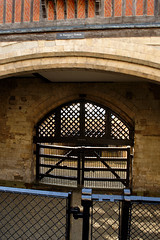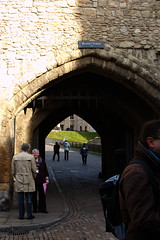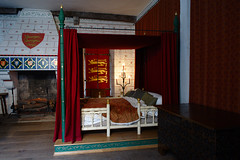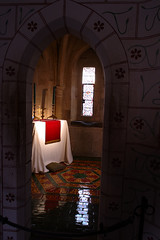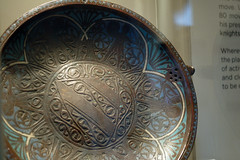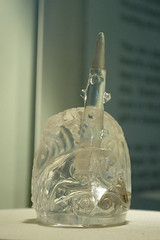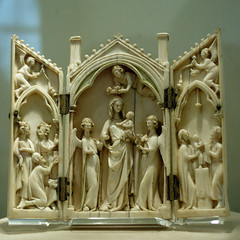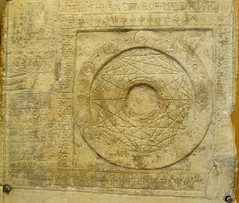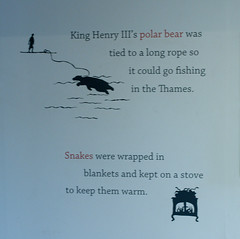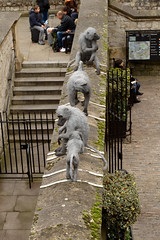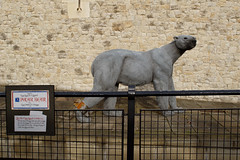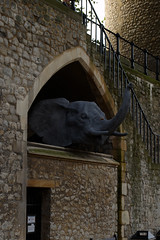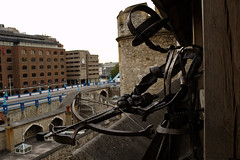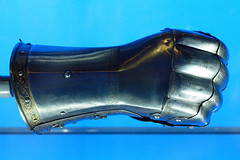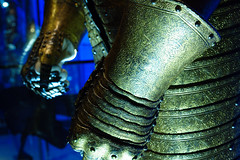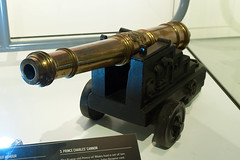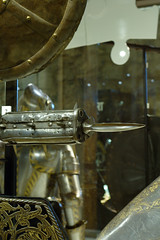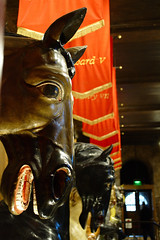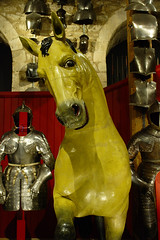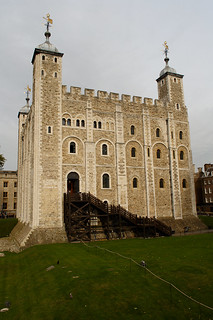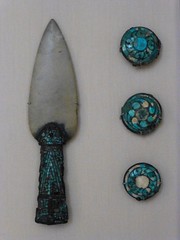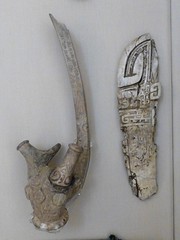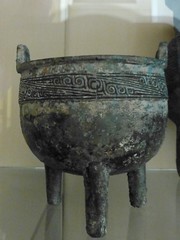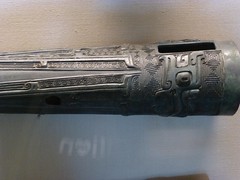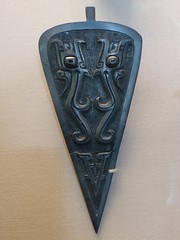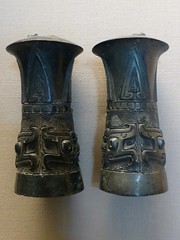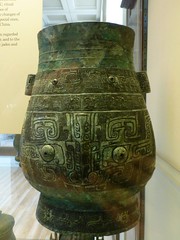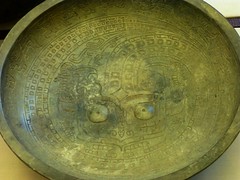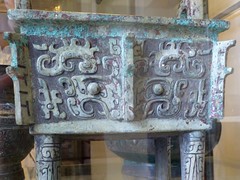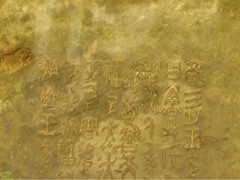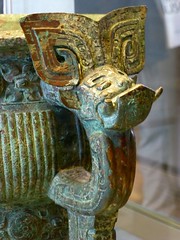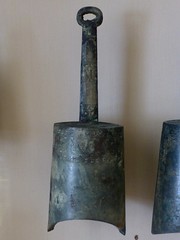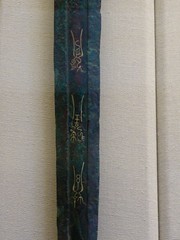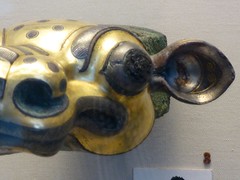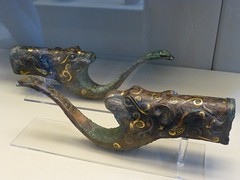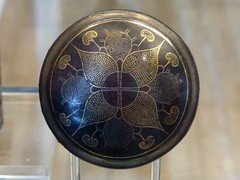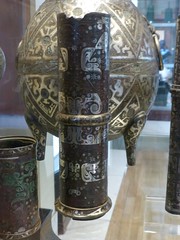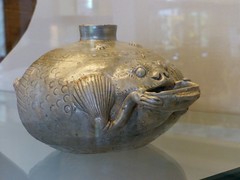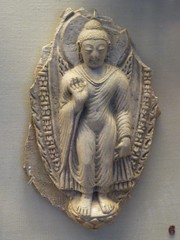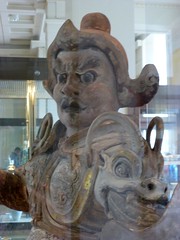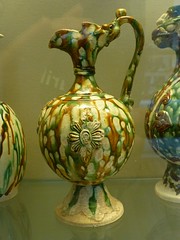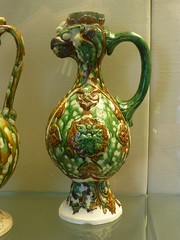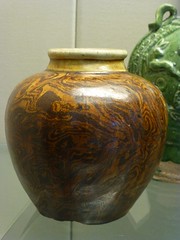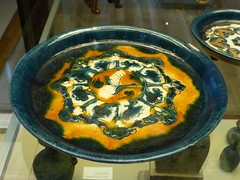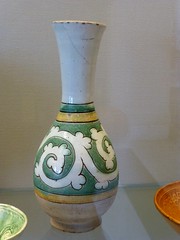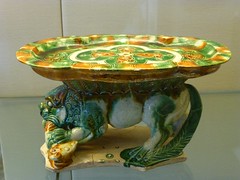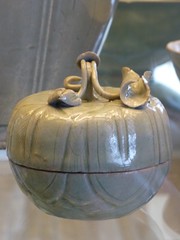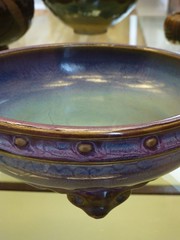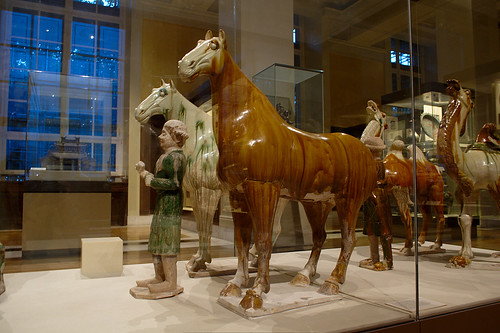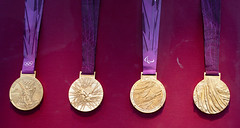Back at the end of July J and I visited the British Museum’s current major exhibition – Life and Death in Pompeii & Herculaneum – which is still on till the end of September. We timed our visit for a morning coz it’s been selling out & we figured the least crowded time would be earlier, it was still pretty busy tho.
(No photos, never any photos from temporary exhibitions.)
The exhibition opened with a handful of objects to give an overview of the sorts of things in the exhibition, including a small table and a cast of a dog. Then on to a film about the destruction of Pompeii & Herculaneum by the eruption of Vesuvius in AD79 – I really liked the style of this, it was mostly graphics illustrating captions (with a voiceover) and the words in the text moved about like the thing they were describing. For instance the bit about the initial pyroclastic surges that were stopped by Pompeii’s walls had a caption that came rushing in from the side before piling up in a heap next to the wall.
The bulk of the exhibition was about what this cataclysmic destruction of the two towns has told us about how the Romans lived. Because most stuff was still there in the towns when they were destroyed (and indeed many people were still in the towns) the archaeologists have a snapshot of the daily lives of the period. The way the two places were destroyed also helped to preserve things that generally don’t last the millennia – I think it’s from Herculaneum that they’ve found wooden furniture for instance. So to best display this way of looking at it (life instead of death) they’ve laid out the central portion of the exhibition following the floor plan of one of the houses in Pompeii. The objects associated with each area of the house are therefore in the right places & it gives you a definite sense of both how similar & how different they were. For instance, there are obviously beds & makeup/haircare accessories are in the bedroom which feels very familiar, but the other accessories & decor are much more overtly sexual than we’d expect. Like lamp holders in the shape of winged phalluses (a good luck symbol, I think as well as the sexual meaning rather than instead of).
So after the video the route through the exhibition turned a corner past a boundary marker – on one side it was this person’s property & on the other side it was someone else’s, the remnant of some dispute between the house owners. Then we were outside the entrance to the house. This particular house they were following the plan of had shops in the front (as many did) – I think not necessarily run by the house owner or his/her slaves, and perhaps not even owned by them. They had some objects from shops in this section, including a couple of bottles of garum sauce. One of which was the “finest” variety of this particular brand’s selection, the other was kosher certified. Which surprised me, but shouldn’t’ve. After all by 79AD the Jews were thoroughly a part of the empire & so obviously there would be kosher groceries for them.
Next into house proper, entering the atrium – a public-ish space, where a Roman would receive his or her clients or visitors, and also do much of the day to day life of the household. In the exhibition they had a faux-pool in the centre (which would’ve been filled with rainwater in the original house), and a variety of fine pieces of painting or statuary around the room. I particularly like the one-legged table with the leg in the shape of a panther, which would be used to display & show off the silverware of the family. Off the atrium space they had a mock-up of a bedroom – just one, even tho there were several off the atrium. These would’ve had no windows, so been totally dependant on light from oil lamps (hung off phalluses in some cases!). In this as well as part of an adult’s bed they had the cradle which was found in Herculaneum – we’ve seen it in a few programmes about Pompeii & Herculaneum, but I don’t think I’d been told before that the remains of the baby were found inside it which is rather sad. Among the jewellery & toilette items on display here there were also two sets of jewellery to compare – one had belonged to an elite woman, the other was clearly mimicing this high class stuff but in bronze & glass instead of gold & jewels.
After this it was through to the garden. Obviously there wasn’t an actual garden in the exhibition, but they had some statuary & so on which had been found in gardens. Again some of this was familiarish & some not so much. The drunken Hercules pissing on the ground reminded me of the “wee boys weeing” fountains you seem to see all the time in garden centres (or did back when my parents were taking me to garden centres & I was trying to find something entertaining about the trip). And off in a little side room they had some of the more eyebrow raising pieces, including a fairly large statue of Pan making love to a goat – when it was found in the 18th Century it was regarded as so shocking it wasn’t displayed to the general public. And even now it was set off from the side of the exhibition with a note so parents could avoid taking their children in if they so wished. As well as statuary they had some graffiti from gardens, apparently the inhabitants saw no problems with scribbling notes to themselves carved into the walls. They also had some frescos from a garden room – one wall of the room would’ve opened onto the garden and the rest of the walls were painted to look like a garden. A blurring of the boundary between the real & the representation. Obviously this would be a very idealised garden – with a selection of flowers with no attempt to make sure they’d be flowering at the same times. And also as part of the fresco were some disembodied heads, painted as sort of suspended from the tops of the walls – I don’t think the labels explained what was going on there, it was a bit odd.
The last couple of rooms of the living part of the exhibition were the kitchen & dining room. In the dining area they also showed how the homes were decorated, with examples of frescos of the various styles. My favourite of the mosaics was in this room too – one of a skeleton carrying wine jugs, they’d labelled it as a reminder that death comes for everyone (and this time he’s bringing the wine) 🙂 The kitchen area included some carbonised remains of actual food, which means quite a bit is known about the diet of the Romans in the towns (well, the food remains and the remains in the sewers of Herculaneum have provided that information). There were also a selection of pots & so on – including a dormouse fattener. This was a clay pot that made me think of an inside-out version of the sort of pot you grow strawberries in – a tallish cylinder & on the inside there were little ledges for the dormice to scamper up & down to get their food & just to run about. The household toilet would also have been in the kitchen, the section of the exhibition about it had an example of a fresco with protective decoration above the toilet. Which was the goddess Isis watching over the defecator to protect him from whatever they worried they might catch from the toilet (presumably food contamination was a frequent occurence). A bit of a let down for a mighty Egyptian goddess, I think 😉
The last part of the exhibition was about the eruption. It included a few of the plaster casts made from the Pompeii dead, as well as some of the associated items from both Pompeii & Herculaneum. There was also one cast that had been made with resin – so the bones of the victim were dimly visible inside (and jewellery had been retrieved from inside the cast, because it could be seen). They’d done a good job with the lighting & layout here to make it a bit more subdued & respectful. Quite a sobering section.
I’d sort of thought we might go back & see the exhibition again, but not sure we’re going to end up having the time – a shame. It’s well worth seeing.

